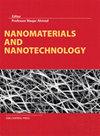Novel nanocomposite membranes based on cross-linked eco-friendly polymers doped with sulfated titania nanotubes for direct methanol fuel cell application
IF 3.3
3区 材料科学
Q2 MATERIALS SCIENCE, MULTIDISCIPLINARY
引用次数: 17
Abstract
Developing low cost and highly active fuel cell is one of the high-priority research directions for fuel cell commercialization, whereas durable electrodes and electrolyte membranes are keys for its optimization. Herein, a novel nanocomposite electrolyte membranes for direct methanol fuel cell were prepared from eco-friendly polymer blend composed of poly(vinyl alcohol) (PVA) and iota carrageenan (IC). Sulfated titania (SO4TiO2) nanotubes are synthesized by impregnation–calcination method and incorporated as doping agents into the polymer matrix with different percentage ranged between 1 wt% and .5 wt%. The PVA/IC/SO4TiO2 nanocomposite membranes exhibited reduction in water and methanol uptake compared to that of undoped membrane, while the thermal properties and oxidative stability increased as the doping agent content increased. Methanol permeability of PVA/IC/ S O 4 2 − -TiO2-7.5 membrane was 0.62 × 10−7 cm2 s−1, which is 43 times lower than Nafion 117 (26.9 × 10−7 cm2 s−1). Furthermore, it was noticed that the ion exchange capacity and mechanical properties of the nanocomposite membranes are higher than that of Nafion 117.基于交联环保聚合物掺杂硫酸钛纳米管的新型纳米复合膜用于直接甲醇燃料电池
开发低成本、高活性的燃料电池是燃料电池商业化的重点研究方向之一,而耐用的电极和电解质膜是优化燃料电池的关键。以聚乙烯醇(PVA)和角叉菜胶(IC)为原料,制备了一种新型的直接甲醇燃料电池纳米复合电解质膜。采用浸渍-煅烧法制备了硫酸钛(SO4TiO2)纳米管,并将其作为掺杂剂掺入到聚合物基体中,掺杂剂的掺量在1 ~ 0.5 wt%之间。与未掺杂PVA/IC/SO4TiO2纳米复合膜相比,PVA/IC/SO4TiO2纳米复合膜的水和甲醇吸收率降低,而随着掺杂剂含量的增加,其热性能和氧化稳定性提高。PVA/IC/ S O 4 2−-TiO2-7.5膜的甲醇渗透率为0.62 × 10−7 cm2 S−1,比Nafion 117 (26.9 × 10−7 cm2 S−1)低43倍。此外,纳米复合膜的离子交换能力和力学性能均高于Nafion 117。
本文章由计算机程序翻译,如有差异,请以英文原文为准。
求助全文
约1分钟内获得全文
求助全文
来源期刊

Nanomaterials and Nanotechnology
NANOSCIENCE & NANOTECHNOLOGY-MATERIALS SCIENCE, MULTIDISCIPLINARY
CiteScore
7.20
自引率
21.60%
发文量
13
审稿时长
15 weeks
期刊介绍:
Nanomaterials and Nanotechnology is a JCR ranked, peer-reviewed open access journal addressed to a cross-disciplinary readership including scientists, researchers and professionals in both academia and industry with an interest in nanoscience and nanotechnology. The scope comprises (but is not limited to) the fundamental aspects and applications of nanoscience and nanotechnology
 求助内容:
求助内容: 应助结果提醒方式:
应助结果提醒方式:


